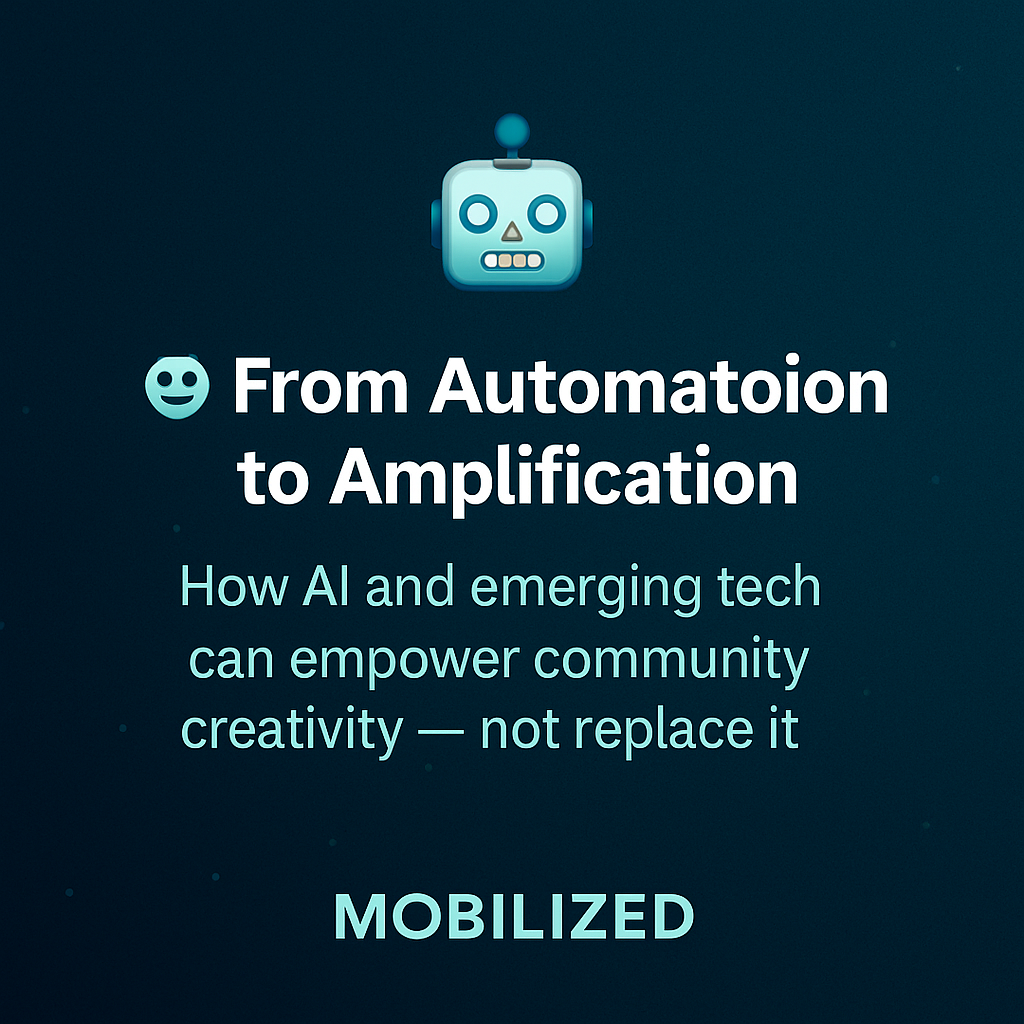
How AI and emerging tech can empower community creativity — not replace it
The Big Picture
- AI isn’t the end of human creativity — it’s a multiplier.
- When designed ethically and deployed openly, emerging tech can help communities tell their own stories, build shared knowledge, and co-create cultural value — without surrendering control to corporate algorithms.
The Problem
Big Tech’s race to automate everything risks erasing the human pulse behind art, journalism, and community expression.
- Automation over imagination: AI trained on corporate data often replicates bias and mediocrity.
- Creative capture: Artists and storytellers lose ownership as platforms profit from their work.
- Attention extraction: Recommendation engines shape what we see — not what we need.
The result: homogenized media that narrows perspective instead of expanding it.
The Opportunity
Used right, AI can democratize creative tools — putting superpowers in local hands.
- Co-creation platforms: Open-source AI helps communities remix, translate, and share ideas freely.
- Local language models: Preserve culture and context, not just content.
- Data cooperatives: Communities own and train their own datasets for mutual benefit.
- Augmented storytelling: AI assists with editing, visualization, and access — while people keep the voice.
It’s not man vs. machine — it’s man with machine, in service of the commons.
Why It Matters
- If creativity defines culture, then who controls the tools defines the future.
- Empowering communities with AI means building systems where agency, authorship, and accountability remain human — and shared.
What’s Next
- Mobilized News is advancing a community intelligence model — connecting open-source AI, local media co-ops, and collaborative learning hubs.
- The goal: a global creative network where innovation flows from the grassroots up, not the top down.
Join the Movement